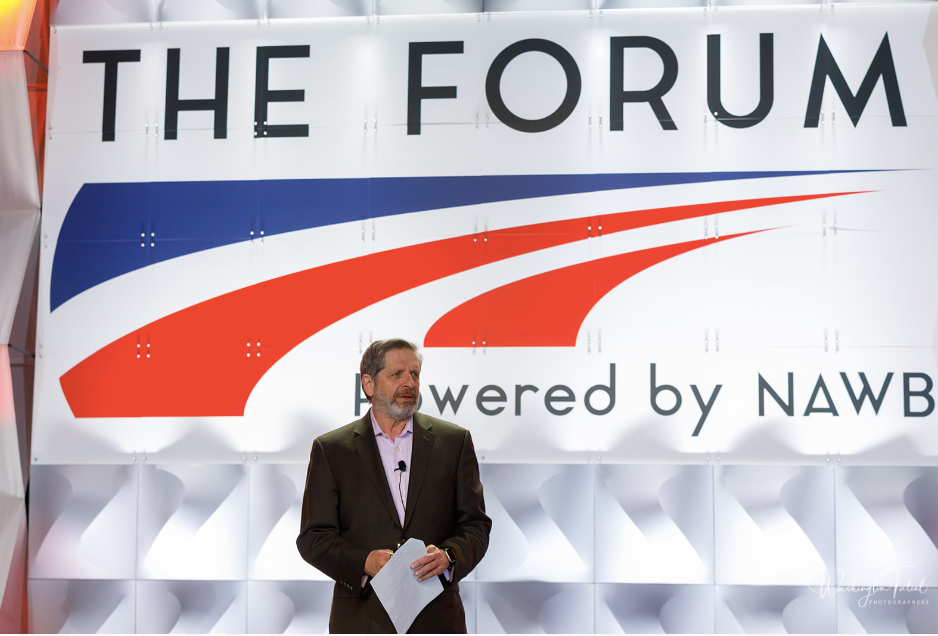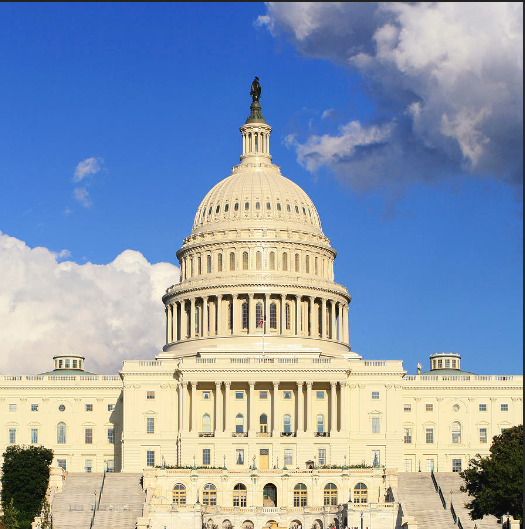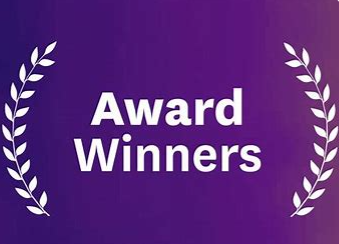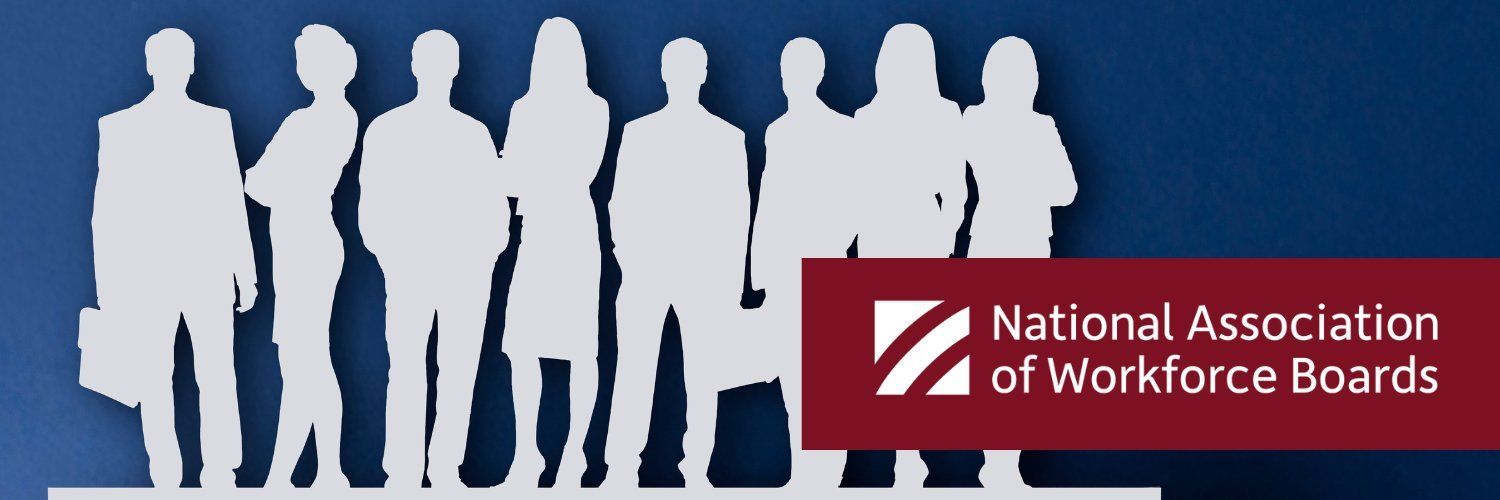A Farewell Tribute: Unpacking 14 Years of Success at NAWB

After 14 years as president and CEO of the National Association of Workforce Boards, I have chosen to step aside. This was, of course, a difficult decision for me, but I’m not leaving the work — just engaging with it differently. At NAWB, we worked “a mile wide and an inch deep” by necessity, and I find myself eager to embrace the absorbing rigor of more intricate projects.
If you’ll indulge me, I’d like to reflect for a moment on the years spent representing and advocating for the nation's 550-plus workforce development boards. In honor of these 14 years, I present you with 14 team successes that I will always be proud to have played a role in securing. They include (in no particular order):
- Workforce Ahead. In 2019, NAWB staff took to the road, visiting local boards in Tucson, Fort Worth, Omaha, Spokane, Salida, San Bernardino, Wichita and a few other locations. The conversations illuminated pressing issues like broadband access, benefits cliffs and rural employment challenges. We came home and recalibrated both the issues we prioritize, and our policy language.
- Workforce Central. What a pleasure it has been to have important podcast conversations about topics like mental health in the workplace and youth participation in the economy. A particularly memorable conversation was with Dr. Isabel Sawhill, senior fellow in economic studies at the Brookings Institution, about policy solutions to the nation’s economic inequalities; check it out.
- Workforce 101. This class for Congressional staffers really helps us frame and communicate critical issues of workforce development to people in a position to shape policy and community impact.
- The Forum. The
nation’s largest annual workforce development conference pre-dates me, but I’m proud of how it has grown and evolved. It’s never a cookie-cutter event; we listen to members’ issues and tailor each year’s gathering to facilitate cross conversations. In 2023, more than 1,500 workforce development leaders came to Washington, D.C., and threw themselves into learning, teaching, discussing, and problem-solving.
This year, we are so proud of the results after our first “Local Business Sunday,” where Forum attendees were issued vouchers to use at participating restaurants and retailers within walking distance of The Forum in the Dupont Circle or Adams Morgan Business Improvement Districts. It was a way to let Forum attendees explore and network while giving back to local businesses that had really had a couple of difficult COVID years. And to many D.C. residents who had likely never heard of a “workforce development board,” we weren't just another conference hanging out at the hotel; we infused more than $25,000 into the economy. - Building a focus on family-centered employment. NAWB is now framing workforce development alongside issues that are of practical, critical importance to parents: transportation, affordable housing, childcare, health, early education. As businesses continue to look for and hire qualified talent, lack of consistent quality childcare can impact parents’ ability to accept employment or advancement. Workforce development boards can improve employment outcomes by engaging in new partnerships, leveraging resources, and serving clients from a whole family approach.
- Boosting professional development for workforce leaders, in particular helping support the NC Workforce Development Leadership Initiative in its inaugural days. The new nonprofit prepares attendees to participate in and lead workforce development boards, engage with economic developers, and create initiatives that will further their communities.
- Navigating the shift from WIA to WIOA. The Workforce Innovation and Opportunity Act (WIOA) that became law on July 22, 2014, replaced the previous legislation known as the Workforce Investment Act (WIA). With WIOA’s emphasis on streamlined services, career pathways, increased accountability and greater involvement of local boards, let’s just say it was a busy time!
- The NAWB Executive Bootcamp. One of NAWB's main goals is to provide the field of workforce development boards with knowledge and training. Through our Executive Bootcamp, leaders deepen their workforce expertise in fiscal management, data analysis and effective collaboration. They improve their knowledge of workforce policy — plus the ability to execute and even craft it — while broadening their network.
- Expanding our worldview. We’ve begun working with the Paris-based Organisation for Economic Co-operation and Development (OECD) and have hosted foreign delegates at The Forum 2023. These interactions have driven home the reality that there's room for collaboration across the world with our colleagues — and that there's also a lot of competition around developing skills.
- The launch of NAWB Connect, our online, peer-to-peer knowledge-sharing platform. This space for our members helps boards from around the nation network and learn directly from each other.
- Leading NAWB through the pandemic, while helping local boards lead their communities during extreme fluctuations in employment, the shift to remote work, and numerous other well-documented impacts. I was particularly proud of our speedy pivot to make The Forum all virtual, and then our gutsy choice to return in person at the first opportunity.
- Countless local board interactions. We haven’t visited all our local workforce development boards, but we’ve probably racked up a million miles trying. We’ve delivered specific impacts through training, strategy and board-specific advocacy efforts, and each time we have brought home insights that strengthen everything we do.
- Advocacy in Washington, D.C. Whether it’s as high-profile as testifying in front of Congress, as impactful as engaging with the Department of Labor, or as quietly focused on the long term by working on legislation that hasn’t yet been introduced, we have ensured our members’ issues are well represented in the nation’s capital.
- Growing our team. When I joined NAWB, we had 3 team members, and now we have 9. This growth has helped us serve more local boards at more depth. We have expanded our focus beyond WIOA to topics such as adult basic education, migrant and seasonal farm workers, the national reserve, childcare development grants, the Farm Bill — you name it.
I end with this important point about our robust, expert team because I want to emphasize that NAWB is in excellent hands. Melanie Anderson, our trusted executive vice president, will take the helm as interim CEO. I have great, great optimism that NAWB will continue to flourish, and I look forward to continuing to engage with my former colleagues and whomever our board selects to be NAWB’s new leader.
A final word to all the workforce leaders I’ve encountered during my tenure at NAWB: You all have given me more inspiration, insight and energy than I've ever given to you. It has been such a deep honor for me to learn first from you and then champion your energy, innovation, and commitment around our nation. Thank you for your commitment to make your communities and America’s labor force stronger than ever.


National Association of Workforce Boards | All Rights Reserved |
Created by Olive + Ash.
Managed by Olive Street Design.









